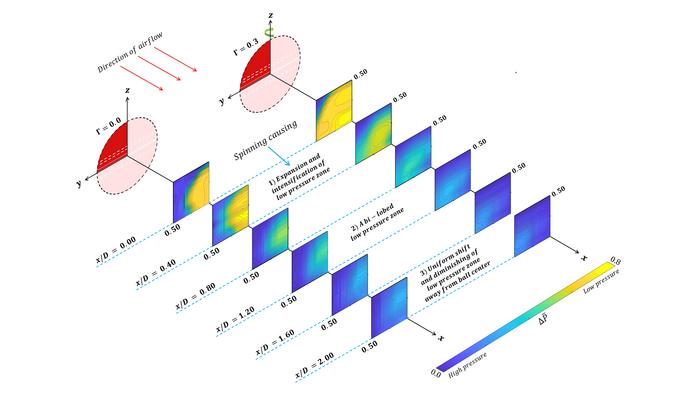Researchers have uncovered the aerodynamic principles behind modern cricket bowling techniques that challenge batters, particularly those employing a near-horizontal arm delivery. This style, popularized by Sri Lankan bowlers Lasith Malinga and Matheesha Pathirana, has intrigued sports physicists due to its effectiveness.
In a study published in Physics of Fluids by AIP Publishing, scientists led by Kizhakkelan Sudhakaran Siddharth conducted wind tunnel experiments to analyze the pressure fields around a spinning cricket ball delivered with a near-horizontal arm. Using a wake survey rake device and imaging systems, they examined balls spinning up to 2,500 revolutions per minute.
The findings revealed that spinning the ball creates low-pressure zones near its surface, which shift and diminish downstream. At higher spin rates, these zones form a persistent bilobed shape. This behavior supports the theory that such bowling techniques exploit the Magnus effect, where a spinning object experiences a force perpendicular to its velocity, causing it to deviate from a straight path.
Siddharth noted that these unorthodox bowling styles are particularly effective with a new ball and can deceive batters throughout a match. The study’s precise measurements offer insights into the complex dynamics of cricket ball aerodynamics.
The research team plans to further investigate how factors like ball wear influence aerodynamic behavior, aiming to deepen the understanding of cricket ball dynamics.
The full study, titled “Unraveling the near vicinity pressure field of a transversely spinning cricket ball,” is available in the August 13, 2024, issue of Physics of Fluids. The article can be accessed at https://doi.org/10.1063/5.0215749.





